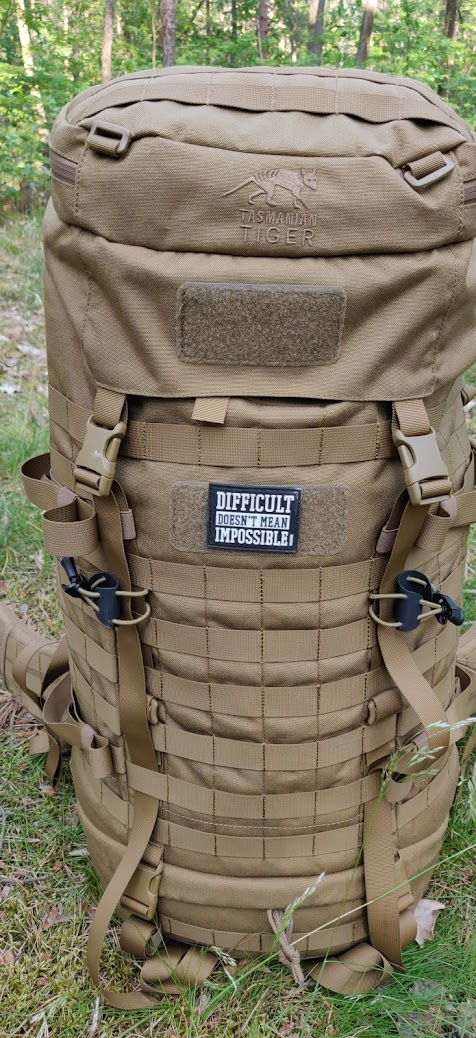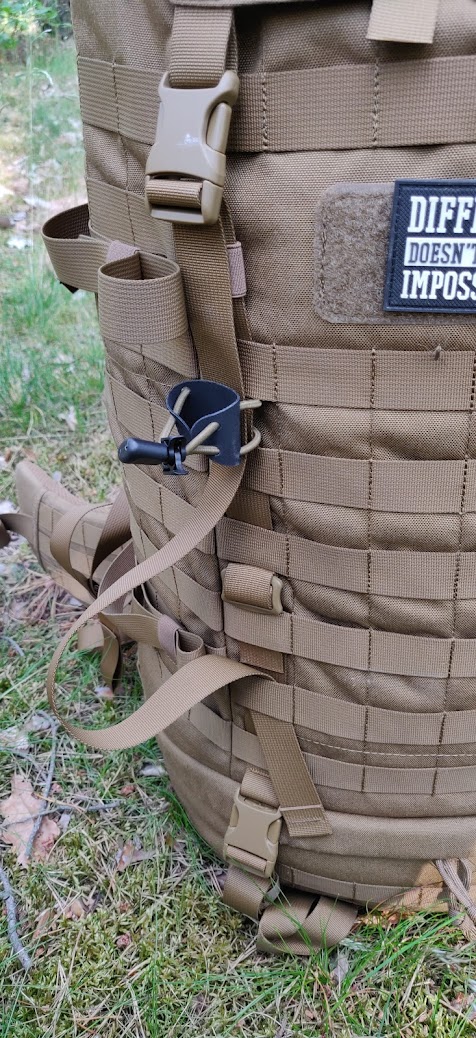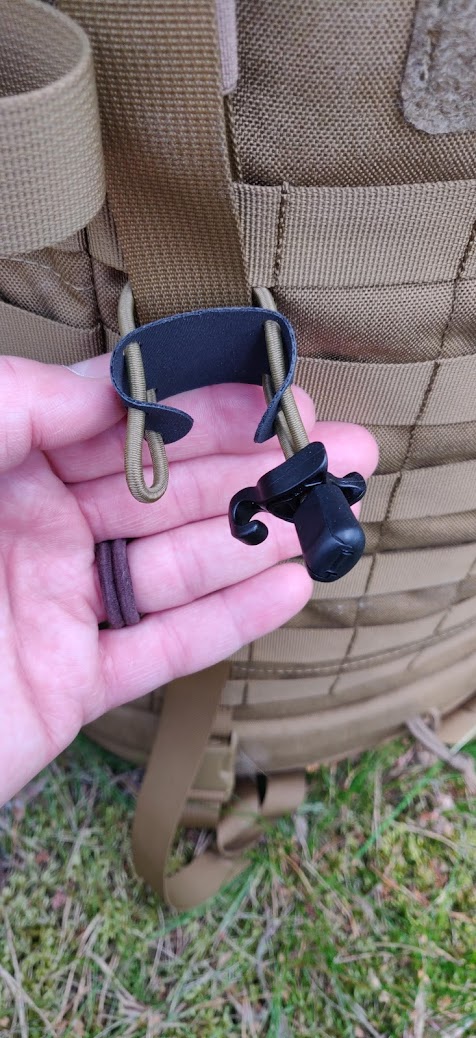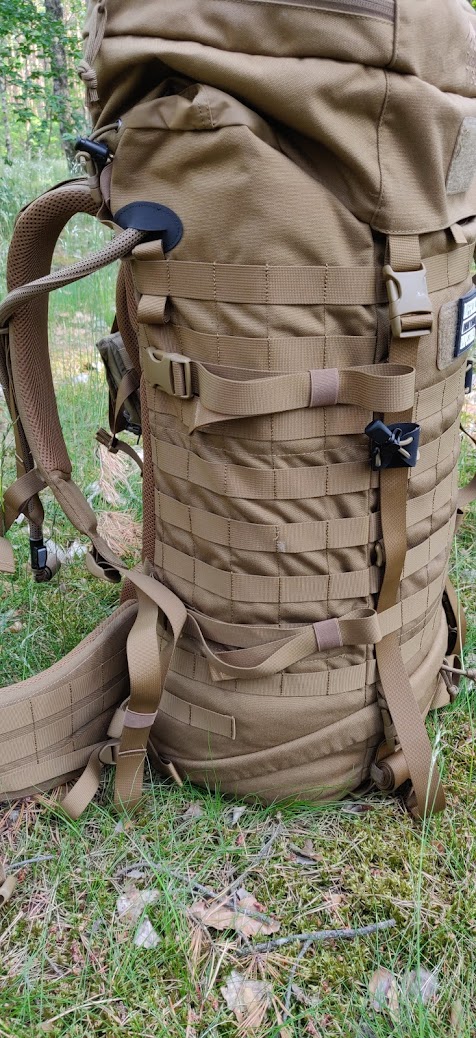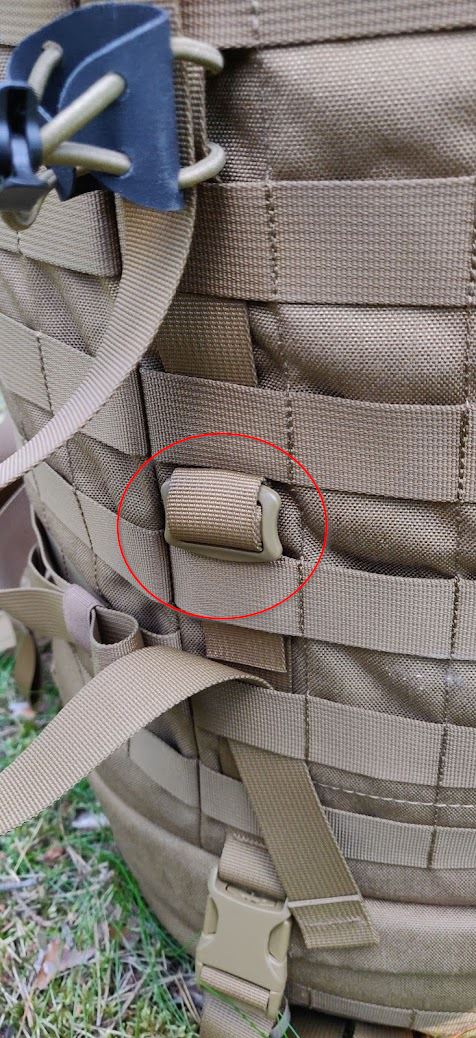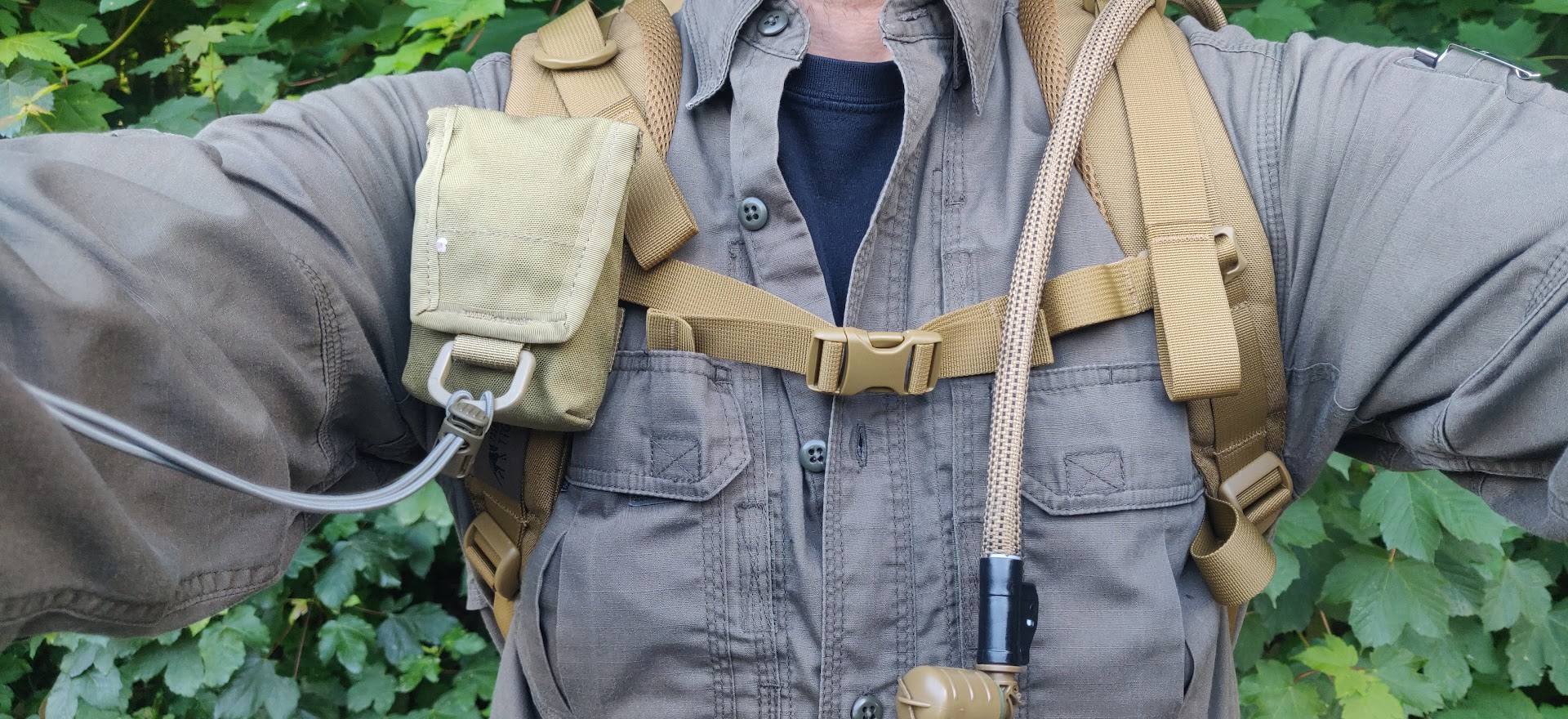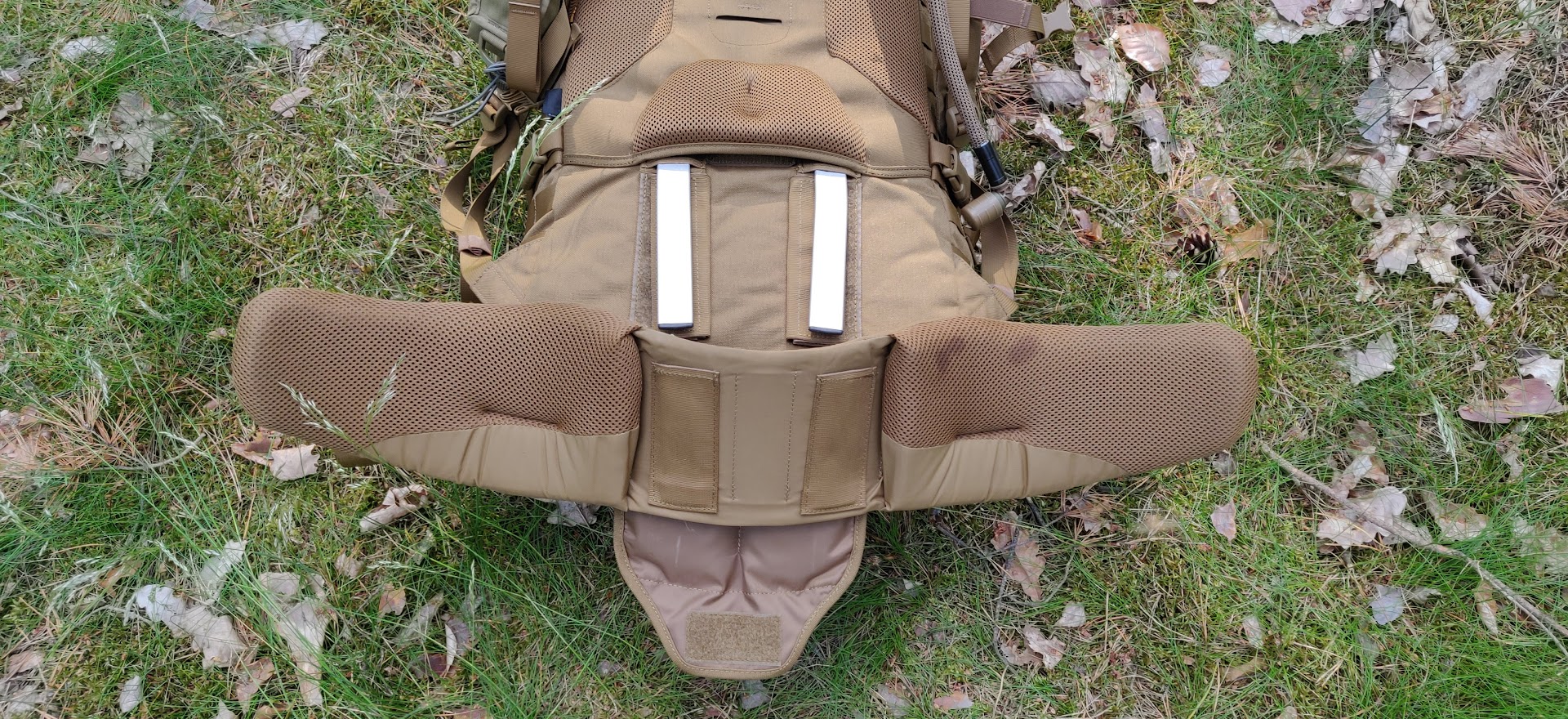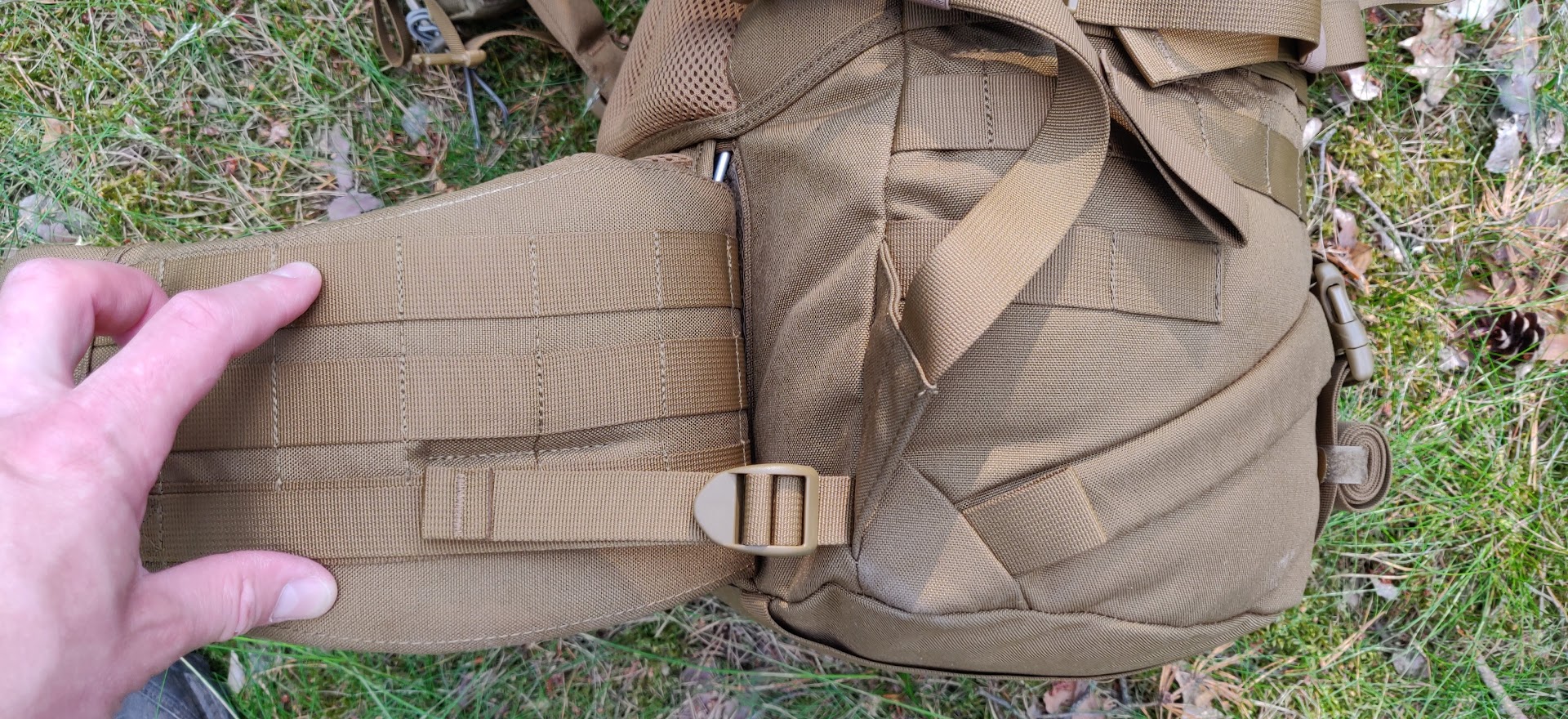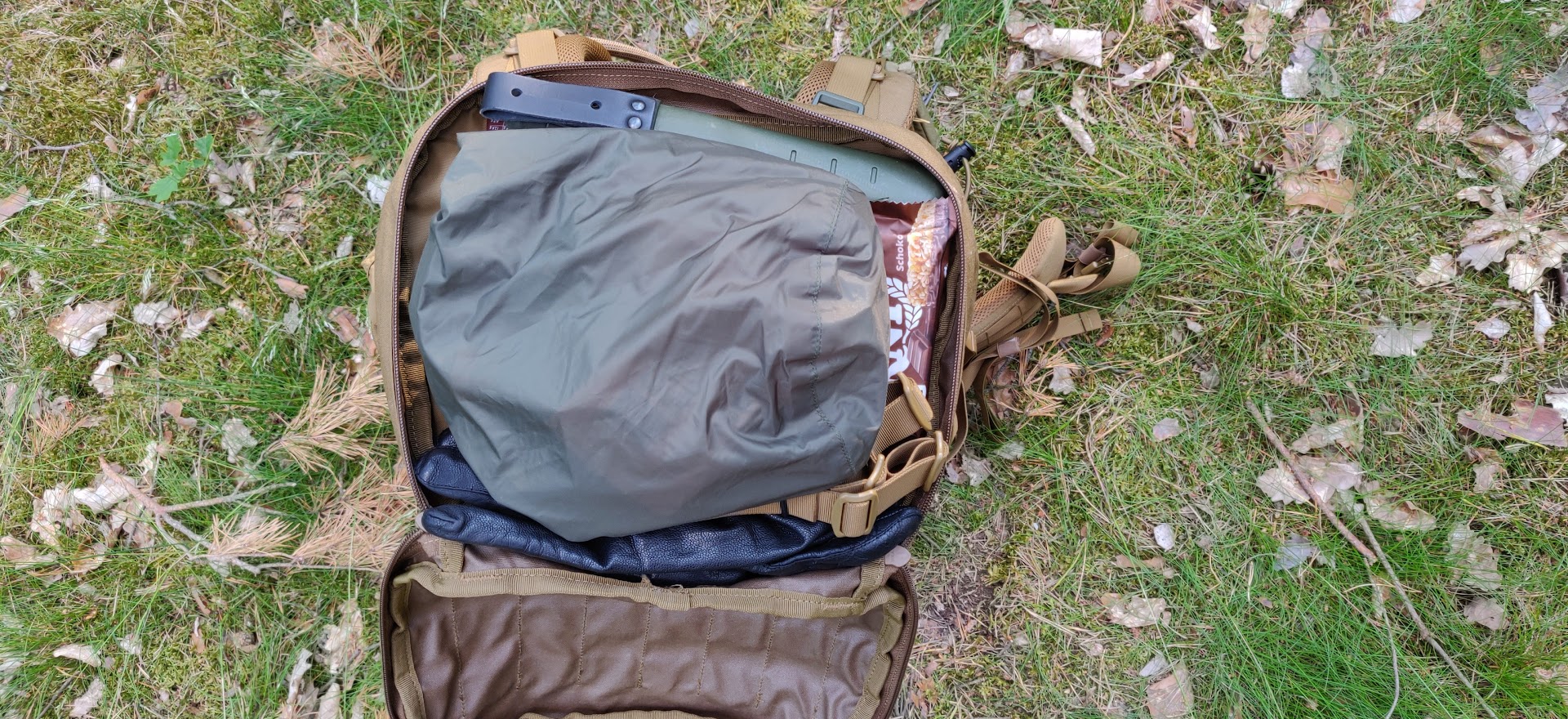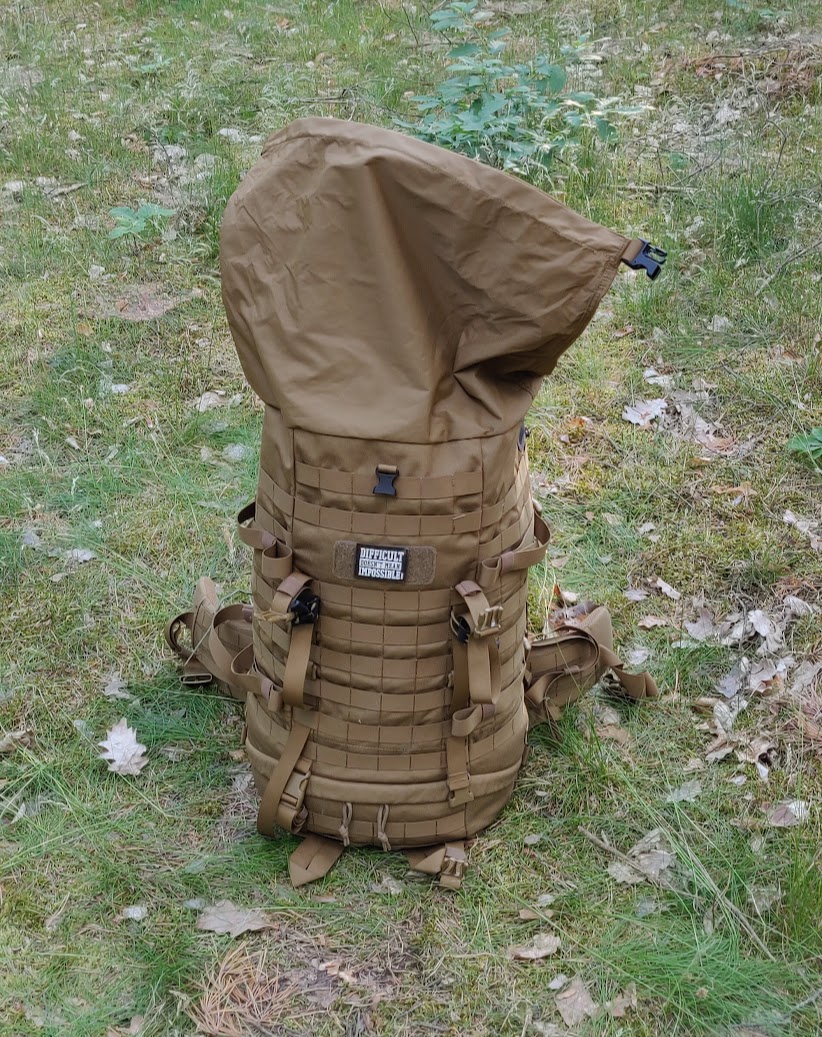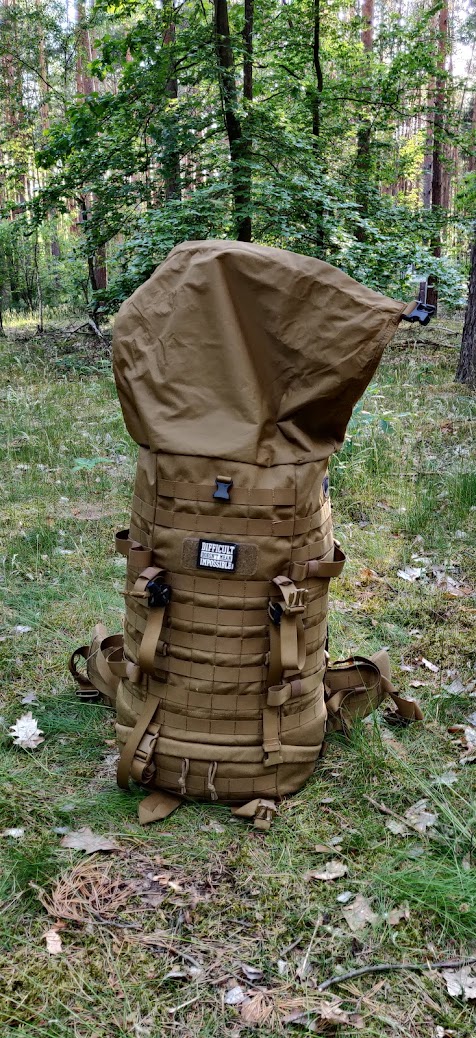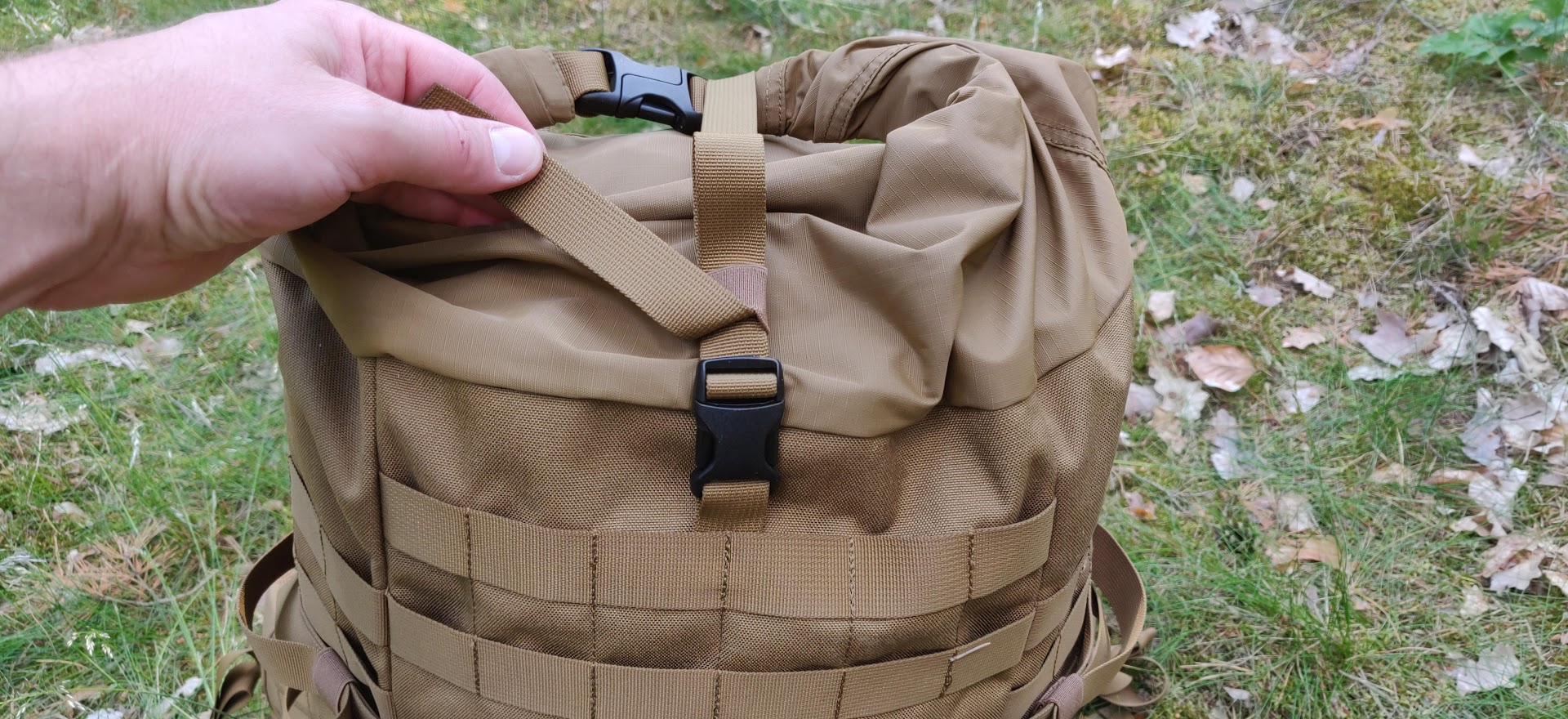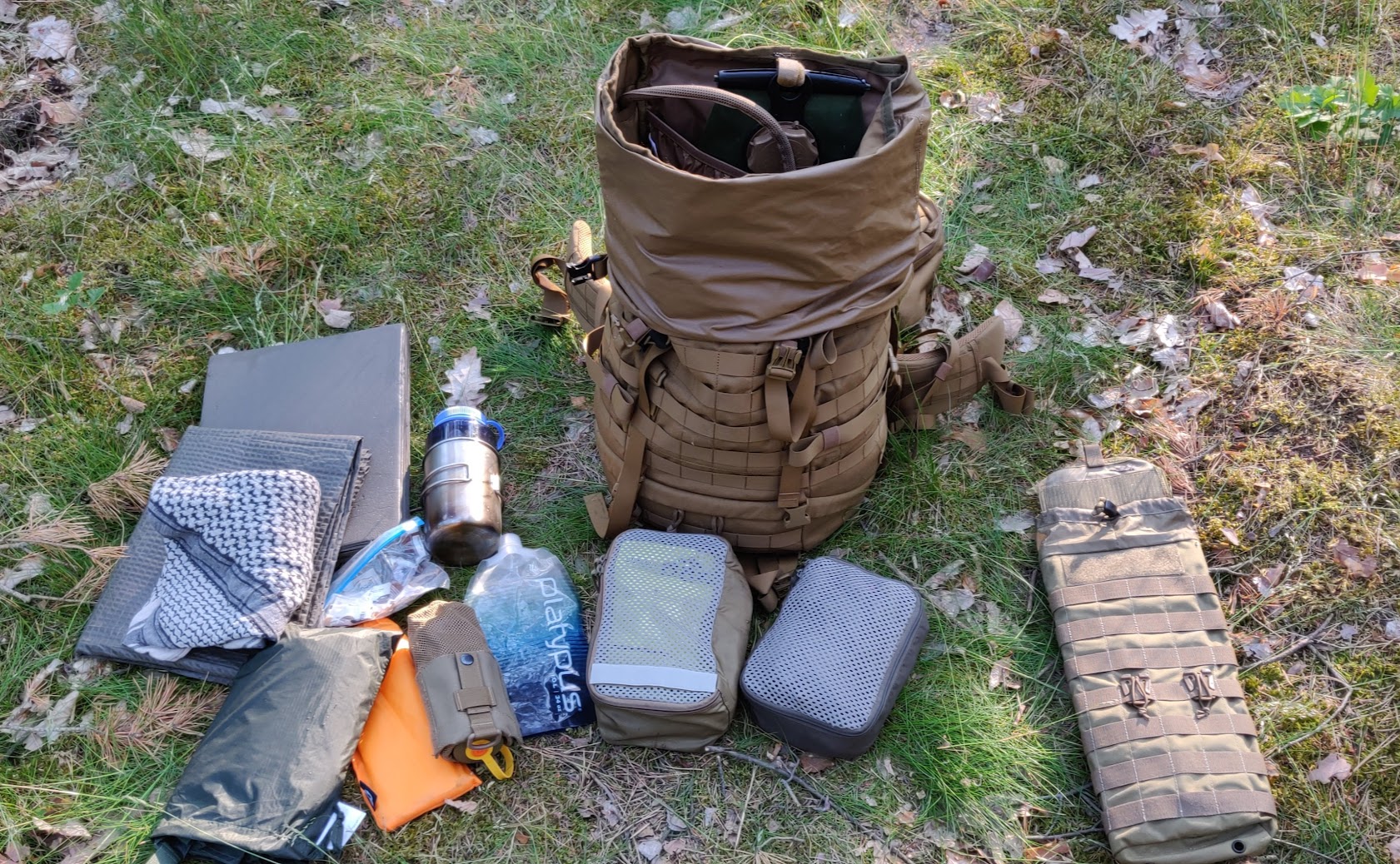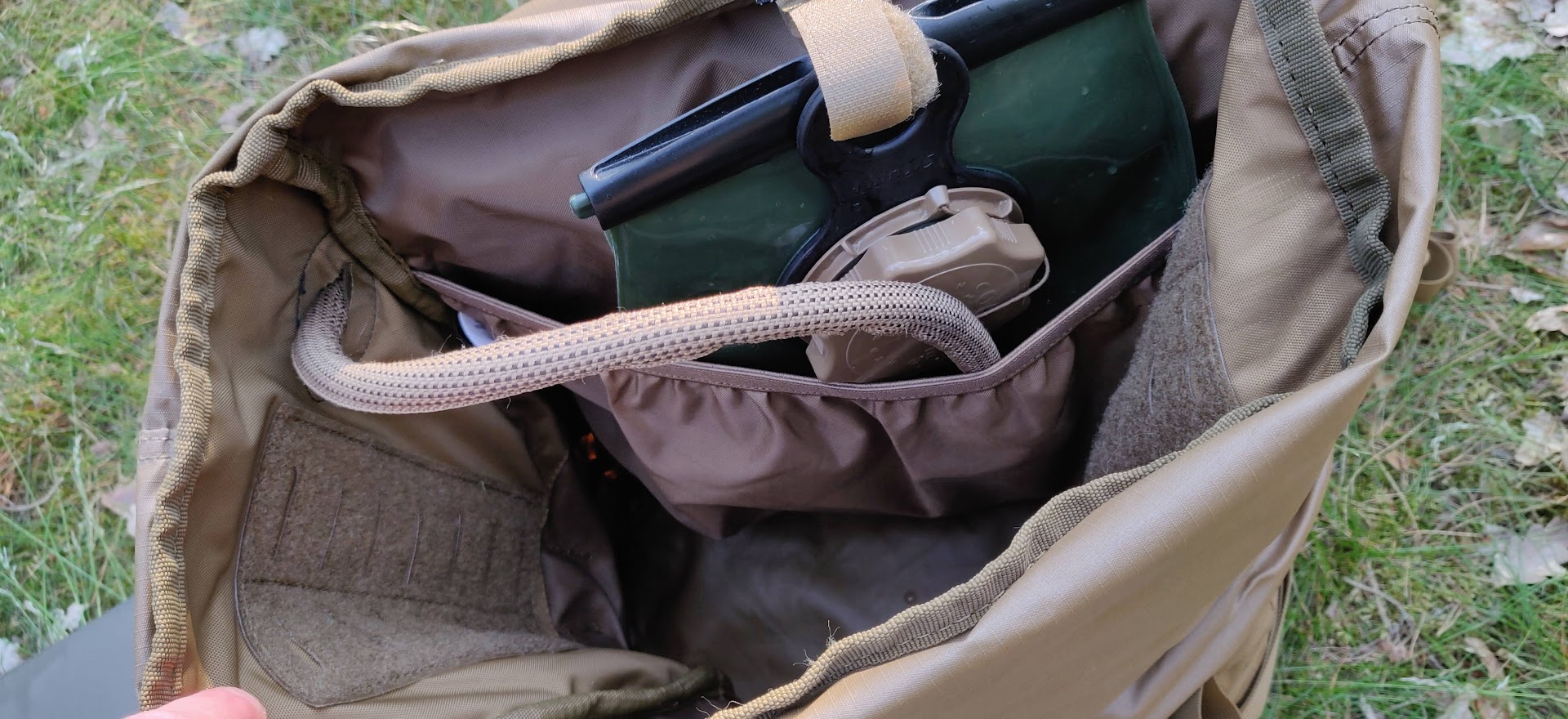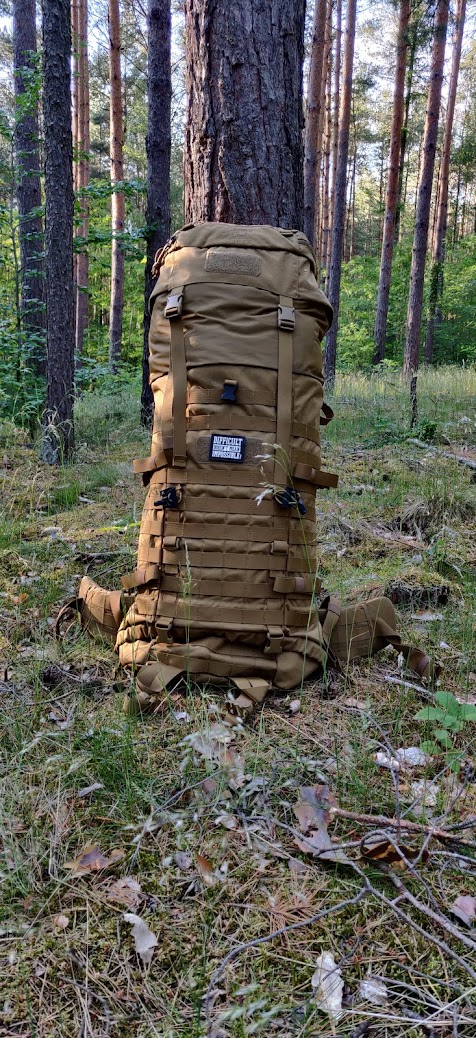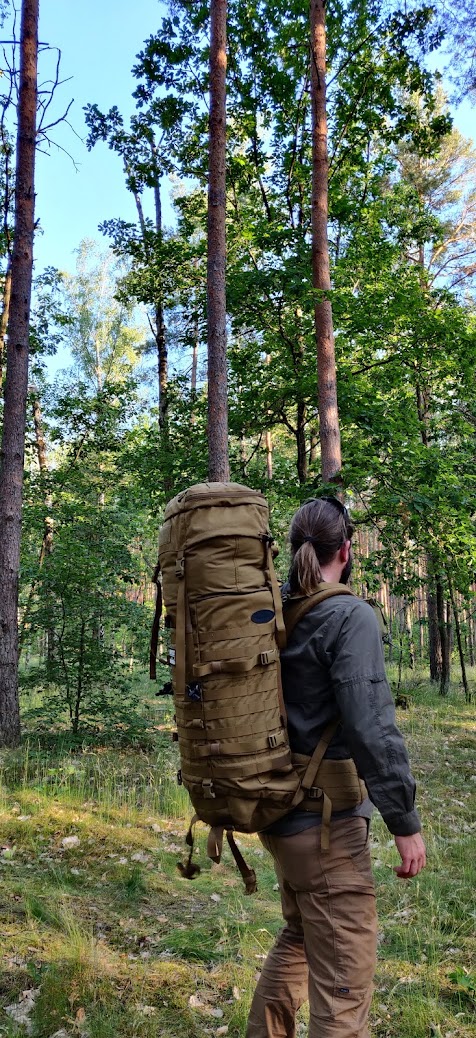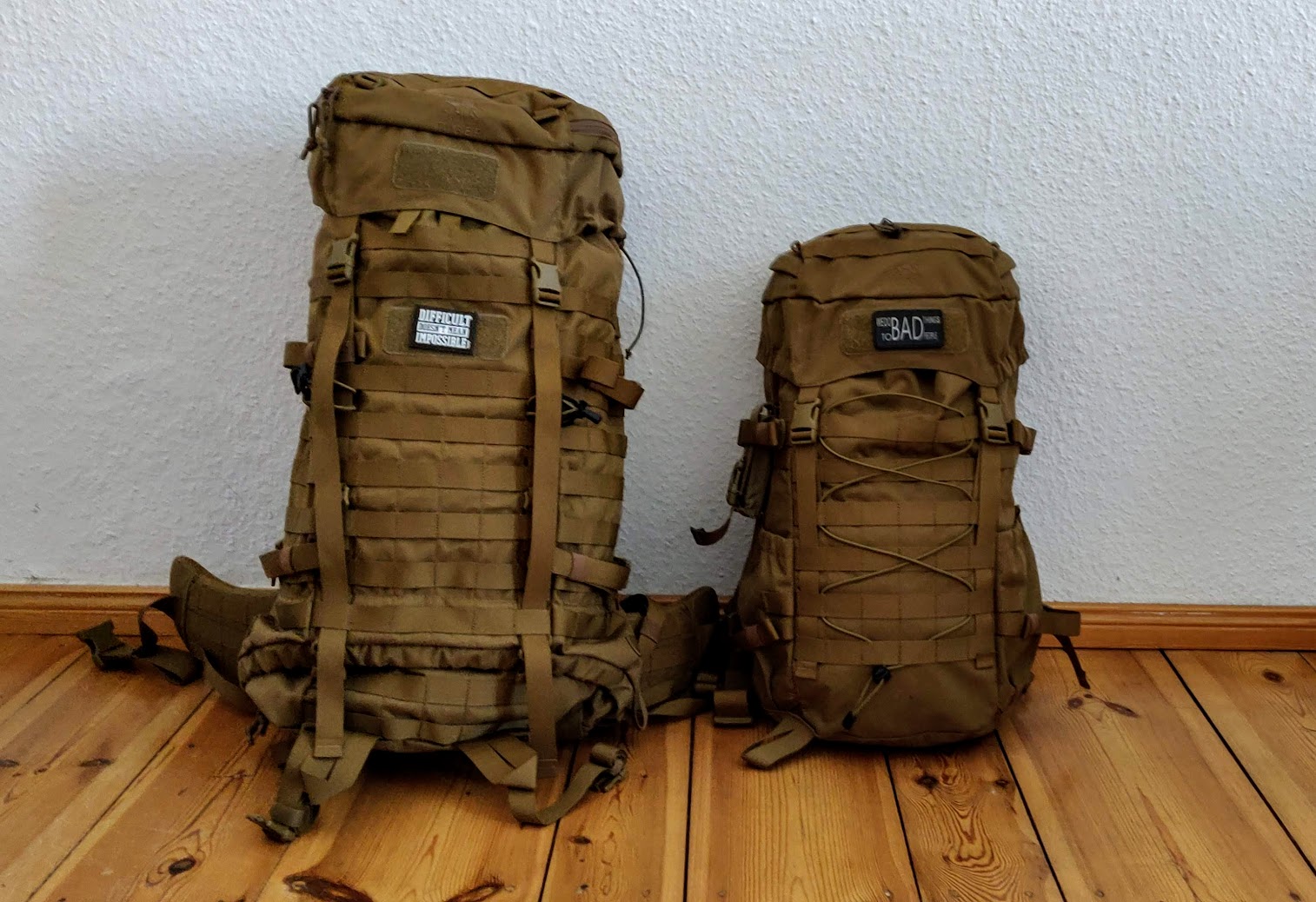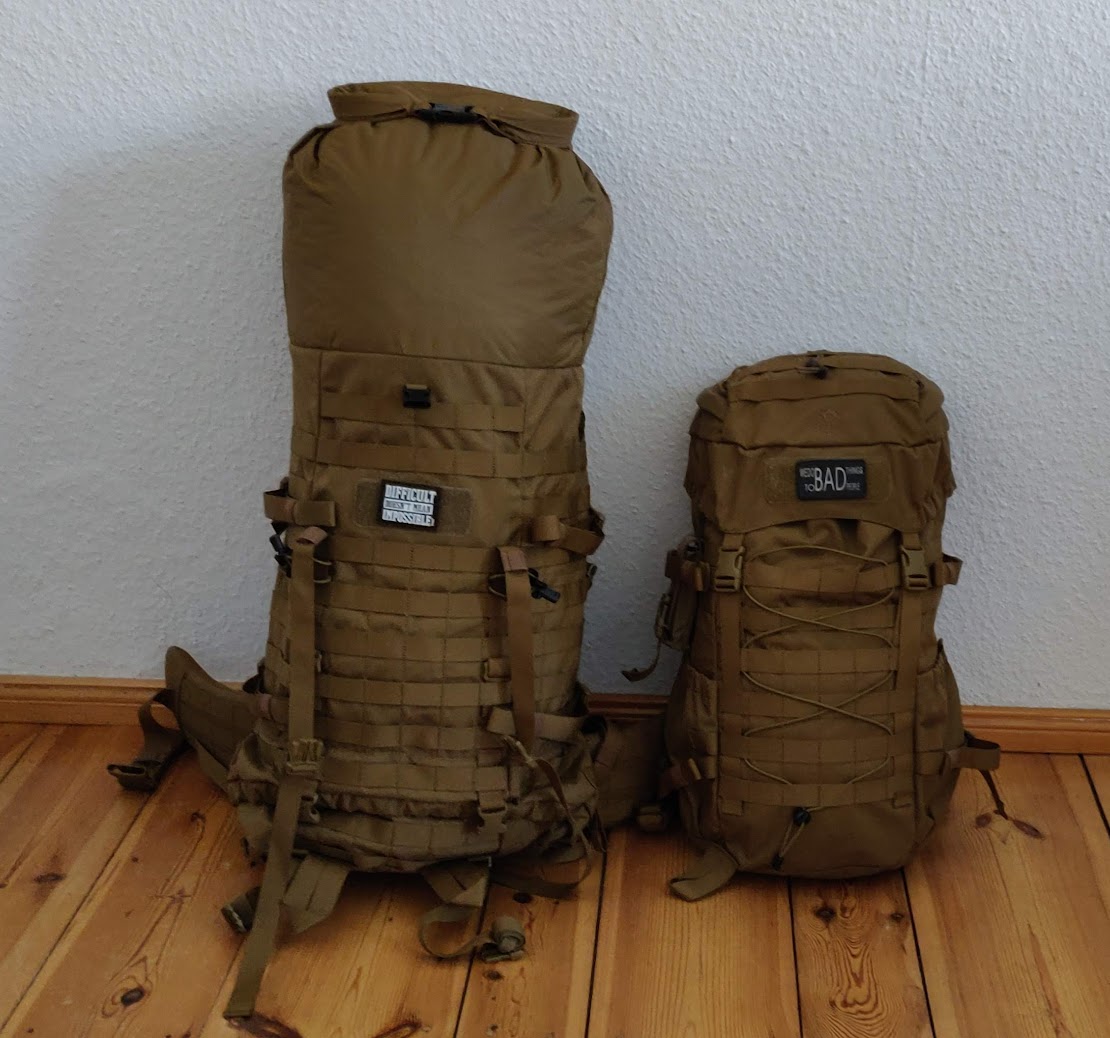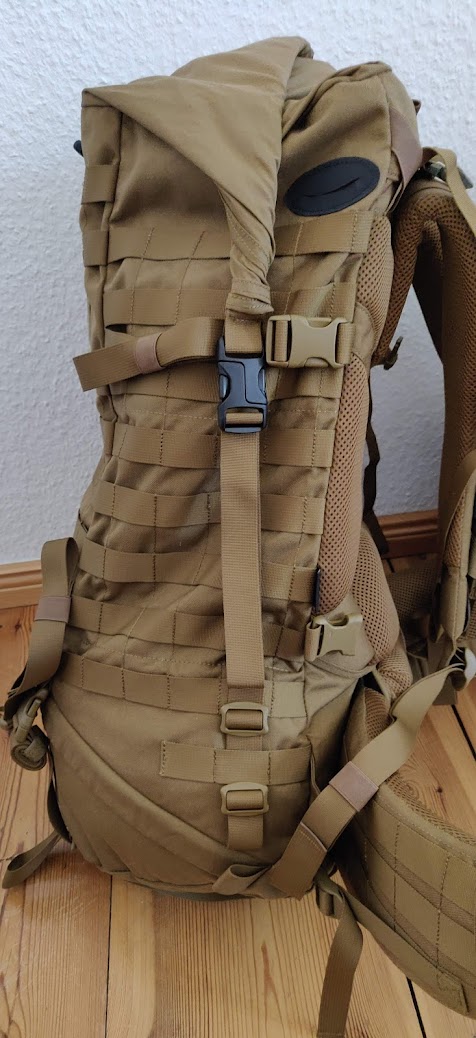Or: The (better) Raid Pack MK IV?
It doesn't always have to be the heavy-duty monster, even I've realized that. Even if I find the Mil OPS 80 pack insanely well done, over 4 kilos empty weight is a statement.
If you can get by with less volume, then the Basepack 52 can be a very modular, convenient and lighter alternative.
For a good six weeks I have had the pack with me on my hikes in Brandenburg, Germany, my impressions I may present to you below.
First, the roll-top backpack is sexy. There is nothing worse for me than an "ugly" backpack. Pilots say "if a plane looks good, it flies well". Form follows function, or something like that.
Since there's no arguing about taste, as we all know, make up your own minds:
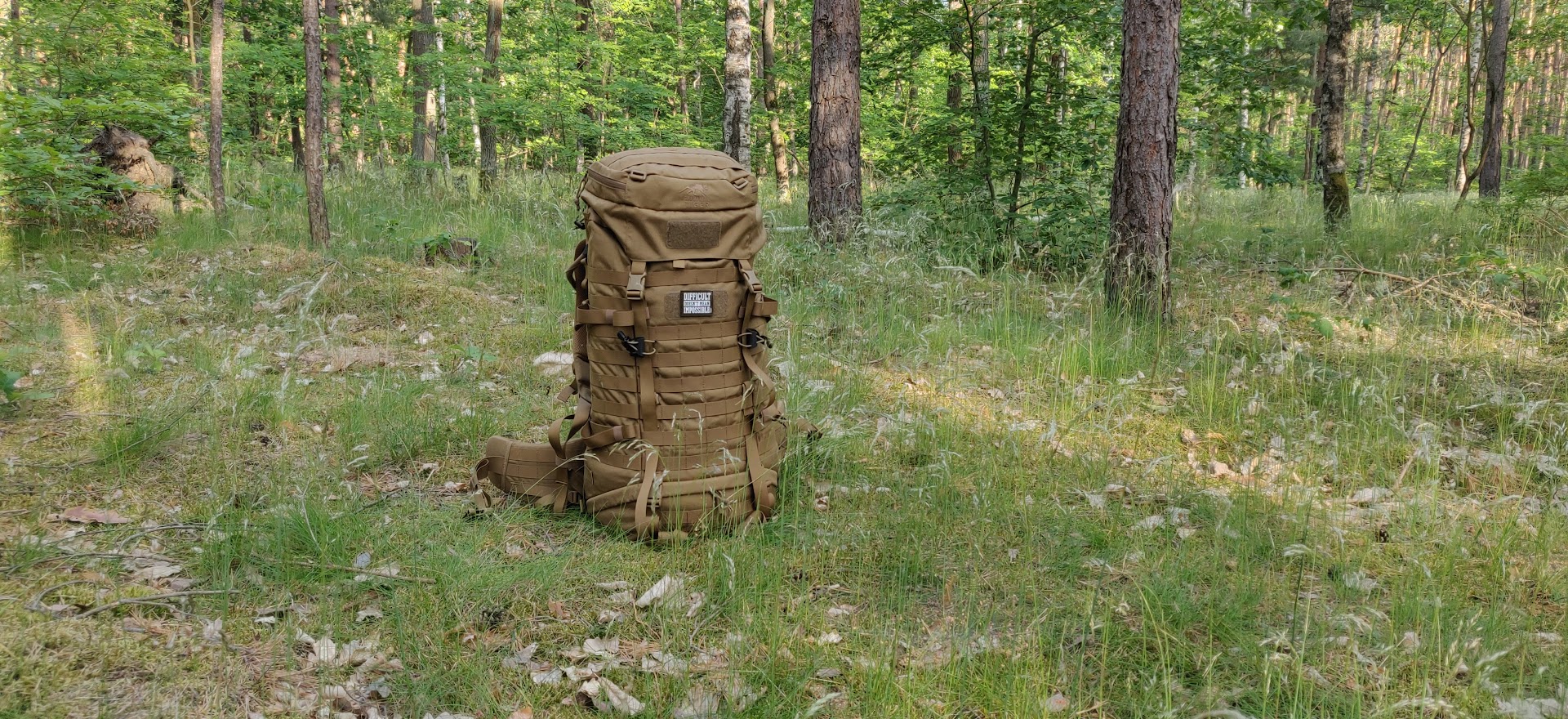
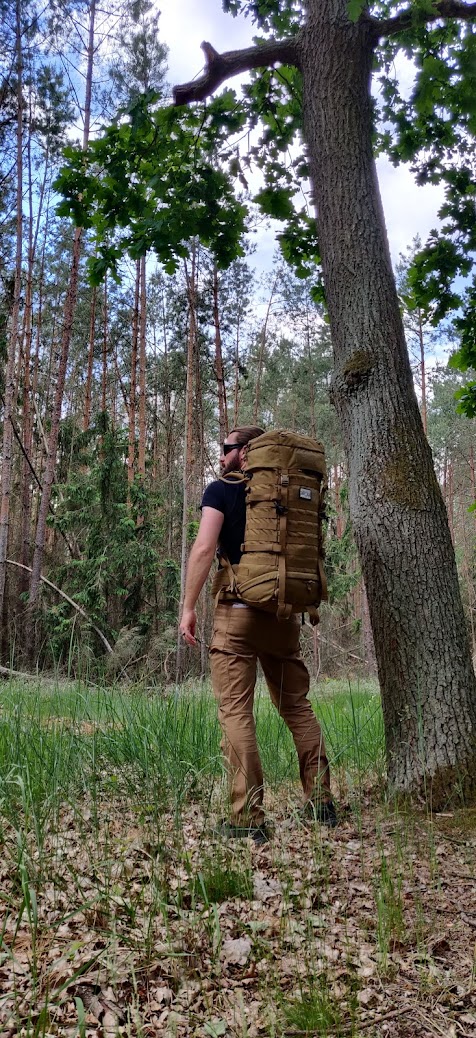
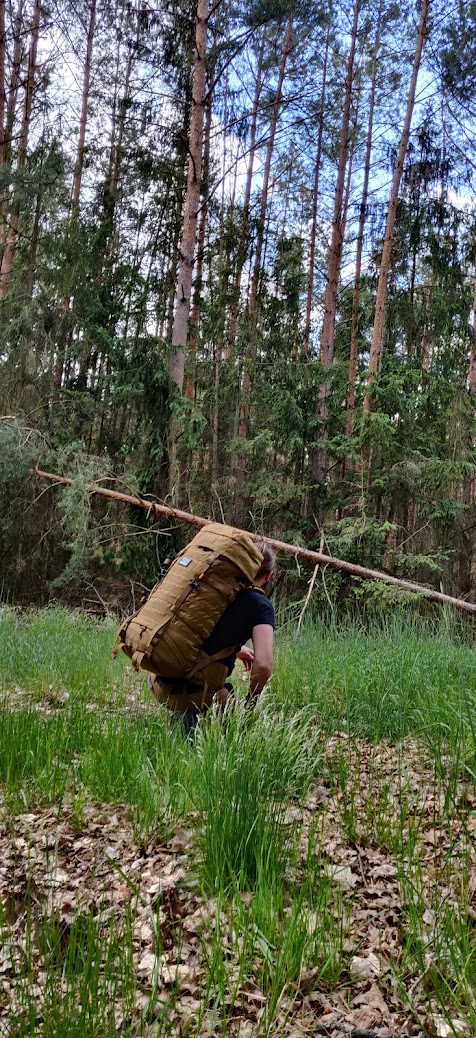


Where the Mil OPS 80+24 can hardly run on features, the Basepack comes across as rather plain. A classic military backpack, original molle, no laser cut.
The technical frame data reads like this:
Dimensions: 74 x 31 x 23 cm
Volume: 52 l, expandable to 65 l
Weight: 2,67 kg
Back system: V2 Plus system
Material: CORDURA® 700 den, T-Square Rip FD
V2 Plus back system
Subdivision into main compartment and bottom compartment
Hiking pole/ice axe holder
Height adjustable chest strap
Removable, padded hip belt
Side compression straps
Circumferential bottom compression
Lid with gear loops
Height adjustable, removable lid
Hydration system preparation
It doesn't always have to be the heavy-duty monster, even I've realized that. Even if I find the Mil OPS 80 pack insanely well done, over 4 kilos empty weight is a statement.
If you can get by with less volume, then the Basepack 52 can be a very modular, convenient and lighter alternative.
For a good six weeks I have had the pack with me on my hikes in Brandenburg, Germany, my impressions I may present to you below.
First, the roll-top backpack is sexy. There is nothing worse for me than an "ugly" backpack. Pilots say "if a plane looks good, it flies well". Form follows function, or something like that.
Since there's no arguing about taste, as we all know, make up your own minds:





Where the Mil OPS 80+24 can hardly run on features, the Basepack comes across as rather plain. A classic military backpack, original molle, no laser cut.
The technical frame data reads like this:
Dimensions: 74 x 31 x 23 cm
Volume: 52 l, expandable to 65 l
Weight: 2,67 kg
Back system: V2 Plus system
Material: CORDURA® 700 den, T-Square Rip FD
V2 Plus back system
Subdivision into main compartment and bottom compartment
Hiking pole/ice axe holder
Height adjustable chest strap
Removable, padded hip belt
Side compression straps
Circumferential bottom compression
Lid with gear loops
Height adjustable, removable lid
Hydration system preparation

